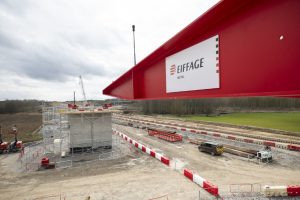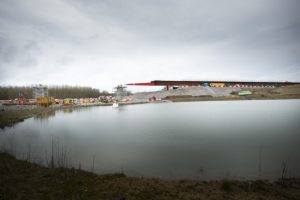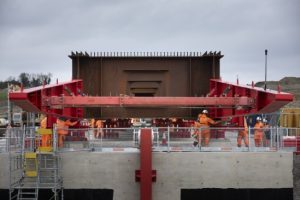HS2 designers and engineers working on five key viaducts have cut their carbon footprint by up to two thirds (66%) by adopting an innovative ‘double composite’ structure which uses significantly less concrete and steel than a more traditional design. HS2 engineers at Westbury on the Buckinghamshire/Oxfordshire border have already begun sliding the second of the new viaduct decks into position.



The approach built on lessons learnt from European high speed rail projects.
The production of these two materials is one of the major drivers of carbon emissions for the construction industry. This move helped the design team cut the amount of embedded carbon in the five viaducts – at Westbury, Turweston, Wendover, Small Dean and Lower Thorpe – by between 52 and 66 per cent.
All the viaducts were designed by HS2’s main works contractor EKFB, a team made up of Eiffage, Kier, Ferrovial Construction and BAM Nuttall – working with ASC (a joint venture between Arcadis, Setec and COWI) and architects Moxon.
Jose Candel, EKFB’s Design Delivery Director commented:
“The double composite design of this group of viaducts spanning Bucks and Northants, is exemplary here in the UK. The innovative deck consists of steel and concrete elements acting together to form a high-structural capacity, but lightweight hollow cross-section and we’re pleased to be able to apply this design concept to five structures across HS2’s central section.
“Its implementation has been possible thanks to multidisciplinary collaboration and partnership with the supply change such as Eiffage Metal, to achieve a design which fully integrates their know-how and the considerations of the construction process, which enables a high degree of off-site manufacturing. This industry-leading approach is innovating and paving the way for future infrastructure projects which will not only benefit on-site construction but supports EKFBs drive to reduce a huge amount of carbon in the process.”